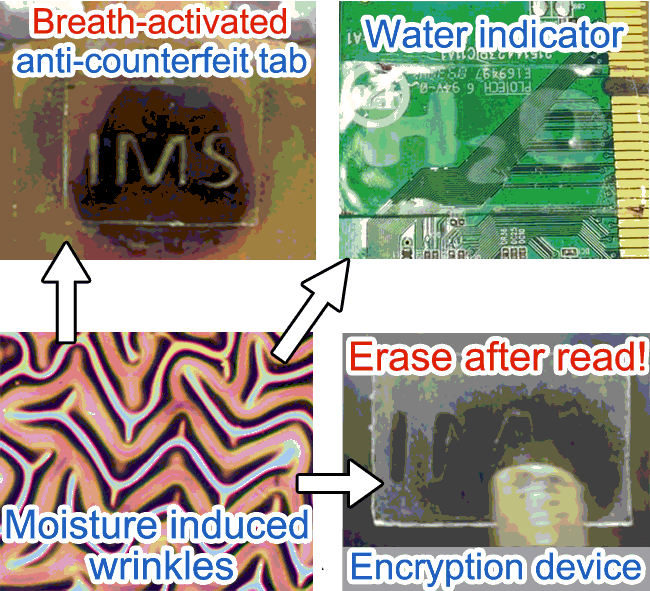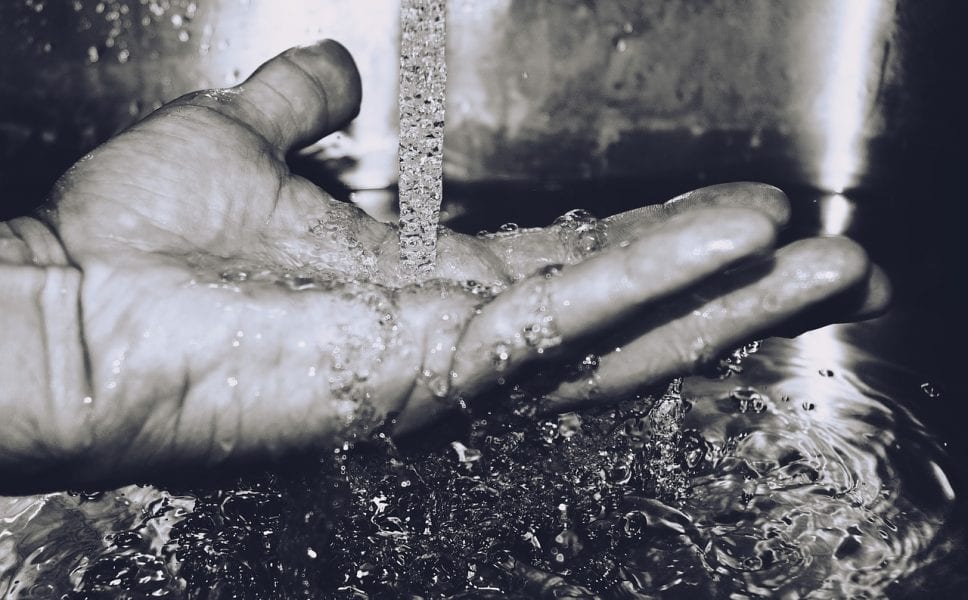 The skin of human fingers becomes wrinkled after prolonged exposure to water, while a flat skin surface is retrieved as dried. The aged face skin also becomes thinner and less elastic due to dehydration, leading to the formation of wrinkles, creases, and lines, while cosmetic surgery can remove these unwanted aging signs by restoring the skin’s thickness and elasticity. It is evident that skin wrinkle dynamics (such as reversibility and stability) can be controlled by external stimuli, as well as the skin’s structure and properties. This phenomenon has inspired researchers to create moisture-responsive surfaces.
The skin of human fingers becomes wrinkled after prolonged exposure to water, while a flat skin surface is retrieved as dried. The aged face skin also becomes thinner and less elastic due to dehydration, leading to the formation of wrinkles, creases, and lines, while cosmetic surgery can remove these unwanted aging signs by restoring the skin’s thickness and elasticity. It is evident that skin wrinkle dynamics (such as reversibility and stability) can be controlled by external stimuli, as well as the skin’s structure and properties. This phenomenon has inspired researchers to create moisture-responsive surfaces.
In a recent paper published in Advanced Materials, Luyi Sun and colleagues in University of Connecticut, USA, report the fabrication of three types of moisture responsive wrinkling surfaces. In each device, a stiff, hydrophilic thin film of polyvinyl alcohol (PVA) is bonded to a soft, hydrophobic thick substrate of polydimethylsiloxane (PDMS).
The first wrinkling device has reversible dynamics, like wrinkled fingers, with moisture-induced wrinkles disappearing after a period of drying. The second type is irreversible: once initial wrinkles are erased they can never be formed again. The third type is also irreversible, where once the wrinkles are formed they can no longer be erased.
These different wrinkling dynamics are achieved by changing the stiffness and thickness ratios of the PVA film and the PDMS substrate, as well as tailoring the crosslink degree and gradient of the PVA film. The evolution of wrinkles structures on the surfaces after exposure to water can be observed by changing the transparency of the bilayer material. A computational model was developed to capture the three different wrinkling phenomena, and the predicted wrinkles amplitude correlated well with the direct light transmittance of the material.
These unique responsive dynamics motivate the invention for a series of optical devices triggered by moisture, including anti-counterfeit tabs, encryption devices, water indicators, light diffusers, and anti-glare films. Additionally, this work could pave the road for further understanding of the skin wrinkling dynamic and manipulation.

















